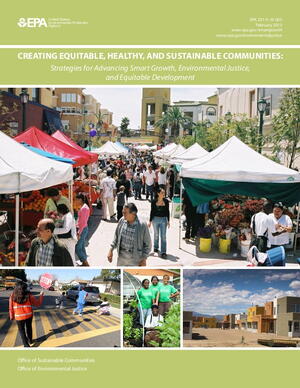
Communities across the country are integrating smart growth, environmental justice, and equitable development approaches to design and build healthy, sustainable, and inclusive neighborhoods. Overburdened communities are using smart growth strategies to address longstanding environmental and health challenges and create new opportunities where they live. Regional and local planners are engaging low-income, minority, and tribal residents in decision-making and producing more enduring development that is better for people and the environment. Community groups, government agencies, and private and nonprofit partners are cleaning up and investing in existing neighborhoods, providing affordable housing and transportation options, and improving access to critical services and amenities.
This informational publication aims to build on past successes and offer other low-income, minority, tribal, and overburdened communities approaches to shape development that responds to their needs and reflects their values. It identifies strategies that bring together smart growth, environmental justice, and equitable development principles and that communitybased organizations, local and regional decisionmakers, developers, and others can use to build healthy, sustainable, and inclusive communities. These are places that provide clean air, water, and land; affordable and healthy homes; safe, reliable, and economical transportation options; and convenient access to jobs, schools, parks, shopping, and other daily necessities.
The strategies are grouped under seven common elements, or shared goals and principles that connect environmental justice, smart growth, and equitable development. The fundamental overlap between these concepts is around how to plan and build neighborhoods to address environmental, health, and economic disparities and provide opportunities for low-income,minority, tribal, and overburdened residents; therefore, all the approaches described relate to land use and community design. This document provides a brief introduction to each strategy, with a description of what it is, how it supports equitable and environmentally sustainable development, and examples of how it has been used. Local governments and community-based organizations can choose the approaches that best suit their needs and goals. Each of the seven common elements is illustrated by an indepth case study highlighting a community’s experiences with these strategies.
The seven common elements, along with the strategies that fit under each one, are summarized on the introductory pages.
